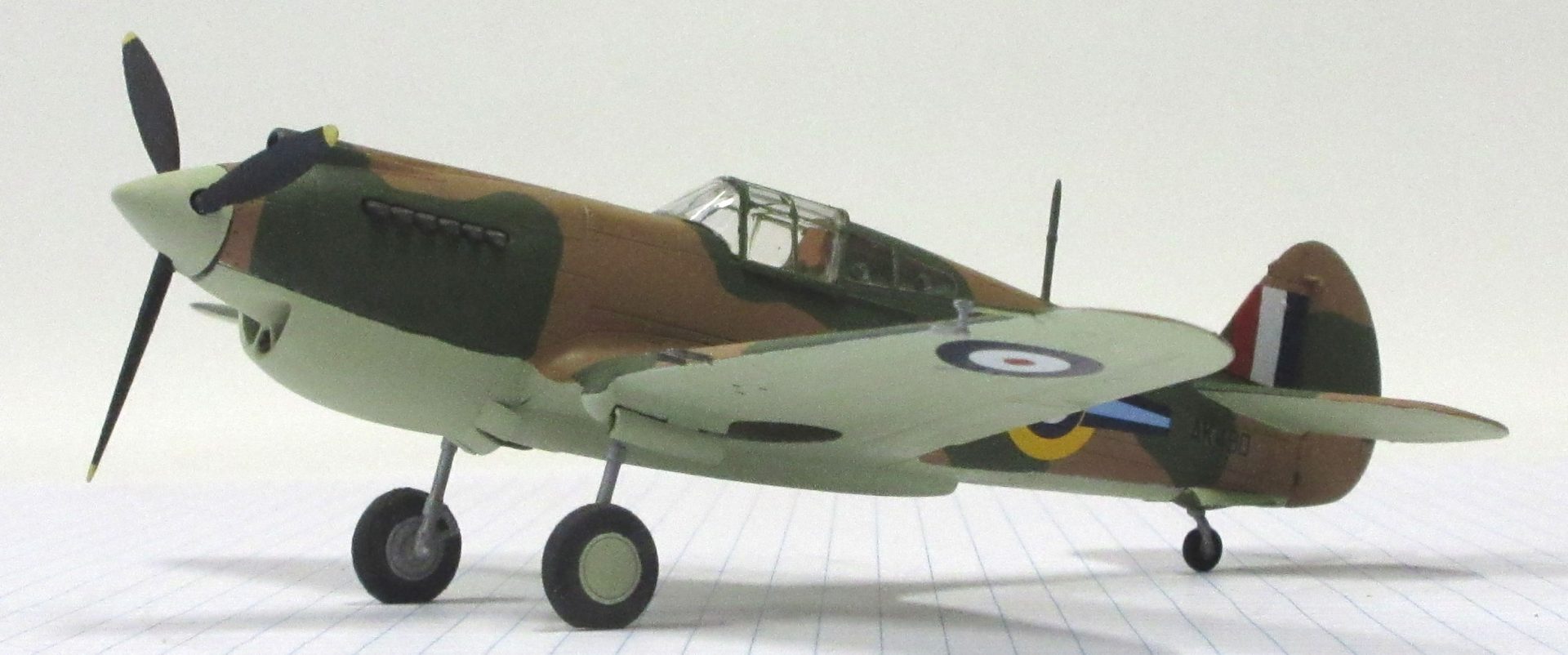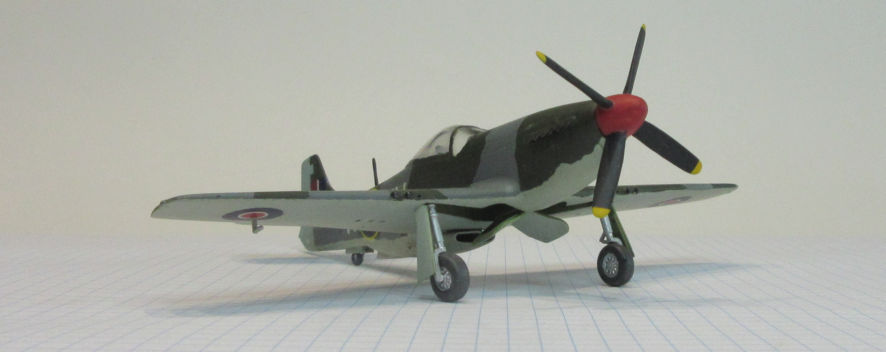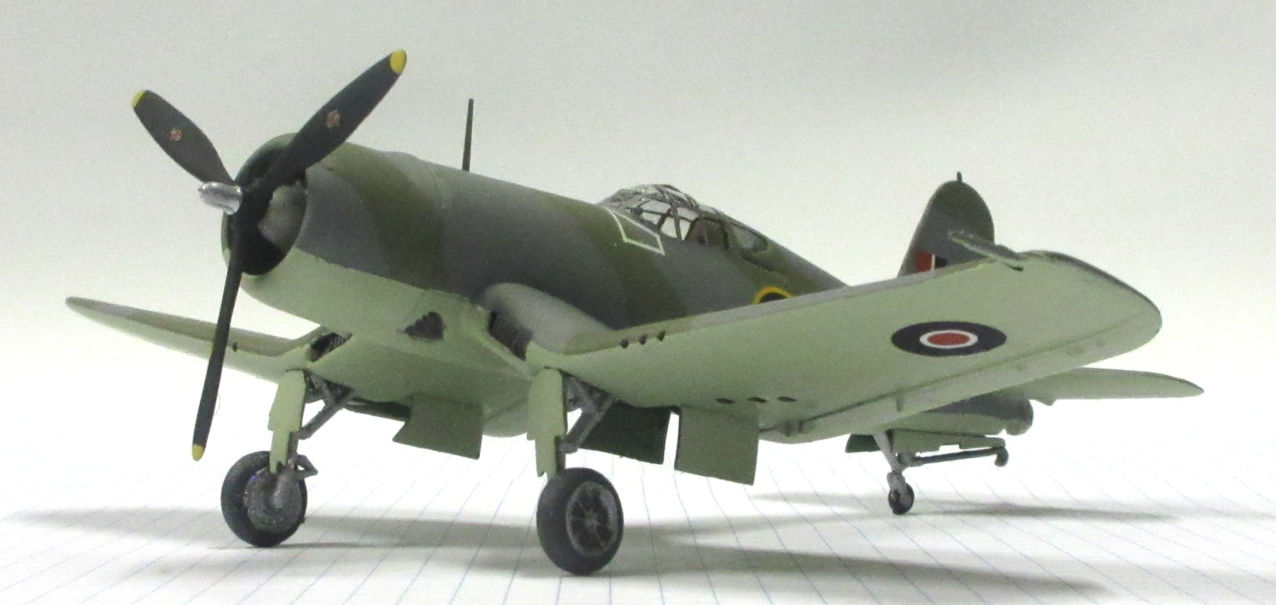Lend-Lease Fighters
Curtiss Tomahawk II – North American Mustang IV – Vought Corsair I

Between March 1941 and the end of World War 2 the United States transferred to Allied nations a total of $40.1billion of war materials ($719billion in 2021 value). This was seventeen percent of the United States total was expenditure. Of that amount over $31.4 billion went to the British Empire (including Canada and Australia) and $11.3billion to the Soviet Union. There is some debate about whether this war a worthwhile investment but, at the time, it was an invaluable support to the was effort against Germany and its allies. President Roosevelt explained it simply – it was like lending a neighbour a hose to help put out the fire burning down his house. Aircraft were only a small part of the over-all lend-lease program but made a significant contribution to the allied air victory.
Curtiss Tomahawk II in 1/72 by Airfix
‘Tomahawk’ is the name given by Britain to the Curtiss P-40B/C. The first Tomahawks began entering British service early in 1941. Tests showedthey did not have the high altitude performance necessary for the air war over northwest Europe so they began to replace Hawker Hurricanes in RAF squadrons fighting in the air over the North African desert. Later versions of the P-40 acquired by Britain were named the ‘Kittyhawk’ and ‘Warhawk’ and the more capable Kittyhawks began replacing Tomahawks in the RAF from early 1942.
There are a huge number of P-40 kits out there but you have to be careful, however, that you are getting an early model P-40 if you want to make a Tomahawk. One of the better bets is probably the Academy kit that was first published in 1987 and was most recently republished in 2014. There is also the Airfix kit first published in 2011 which has subsequently appeared in more than half a dozen differed boxes, the Hobby Boss kit from 2006, the Pavla kit from 2001, and the ancient Frog kit from 1969. Which of these kits might be the best is a matter for debate but this model was made by Steve Pulbrook from the Airfix kit which he thought was okay. Nobody seems to be saying that it is the best Curtiss Tomahawk kit ever but no reviews I’ve seen says it is a less than good kit. The review in the Fine Scale Modeler website concludes: ‘I applaud Airfix for issuing new kits with fairly accurate shapes, adequate details, easy assembly, and affordable prices. Keep ’em comin’!’ Hyperscale adds: ‘This is another in a growing line of great kits from the new Airfix. … This is a nice kit that’s just begging to be built.’
North American Mustang IV in 1/72 by Academy
‘Mustang’ was the name given to North American P-51s operated by British air forces. The Royal Air Force operated almost 1,000 P-51-Bs and P-51C’s which is renamed Mustang IIIs, and almost 900 P-51Ds and P-51Ks which it called Mustang IVs. From late 1943 the Mustangs began replacing Kittyhawks in British service. They had much longer range than Spitfires and many were used ground attacks across Europe to disrupt and destroy German war infrastructure.
If you thought the range of available P-40 kits was huge and confusing you haven’t seen really ‘huge and confusing’ until you try to decide which kit of the Mustang IV you want to make. Scalemates lists about 20 different companies offering the P-51D. Experts are raving about that new Arma Hobbies P-51 kit but it is the earlier P-51C/D version (Mustang III) so we have to settle for lesser kits for the -D version. I made this model from the Academy kit which I really liked and would (and have) happily make more. Reviews of the Airfix kit are good ‘considerable bank for the buck’ says Fine Scale Modeler. Most commentators recommend the Tamiya as the best kit available. ‘For those wanting the best, this Tamiya kit is best’ says Modelling Madness. However the review adds that the cost makes the Hasegawa kit preferable if you want to build more than a couple. Aeroscale comments: ‘I would say that I prefer the Airfix offering over both the Italeri kit and the well cast but rather skinny Hasegawa offering. The Tamiya kit is outstanding but almost three times the price of the Airfix.’ Based on these comments I’d probably try the Airfix kit if I wanted to make another Mustang IV.
Vought Corsair I in 1/72 by Hasegawa
‘Corsair’ was the name used by Britain to designate the Vought F4U naval fighter, the Corsair I being equivalent to the US Navy’s F4U-1. Over 2,000 Corsairs were supplied to Britain, the early Corsair Is with the ‘birdcage’ hood and later versions with the more common blown hoods. Because the carriers of the Royal Navy had slightly lower hangars than the US Navy eight inches was cropped from their wingtip so they would fit. The Royal Navy flew Corsairs in both the Atlantic and Pacific, joining the Pacific War from April 1944 and concluding with attacking targets on the Japanese hone islands in the last days of the war.
There are also a ‘huge and confusing’ range of options when it comes to kits of the F4U Corsair. Fortunately, perhaps, the field narrows down to only a couple of options when it comes to the early Corsair with the ‘birdcage’ cockpit canopy with kits from Hasegawa and Tamiya. The Hasegawa kit was first published in 1981 and released with Royal Navy decals around 2003 while the Tamiya kit is the 2000 release with a canopy for the ‘birdcage’ version released in 2006. I made this model from the Hasegawa kit and enjoyed the experience. The Modeling Madness review of the Hasegawa kit says: ‘This is a neat kit that really deserves to be built’. The Hyperscale review of the Tamiya kit says ‘Highly recommended’. Perhaps it comes down to a matter of cost, as it did with the Mustang.



